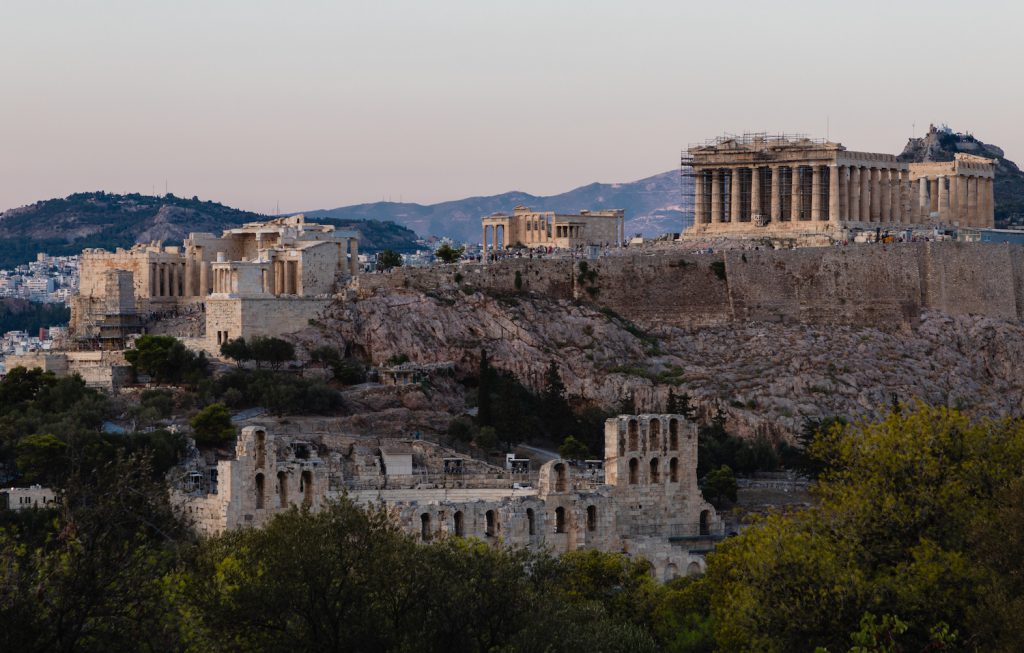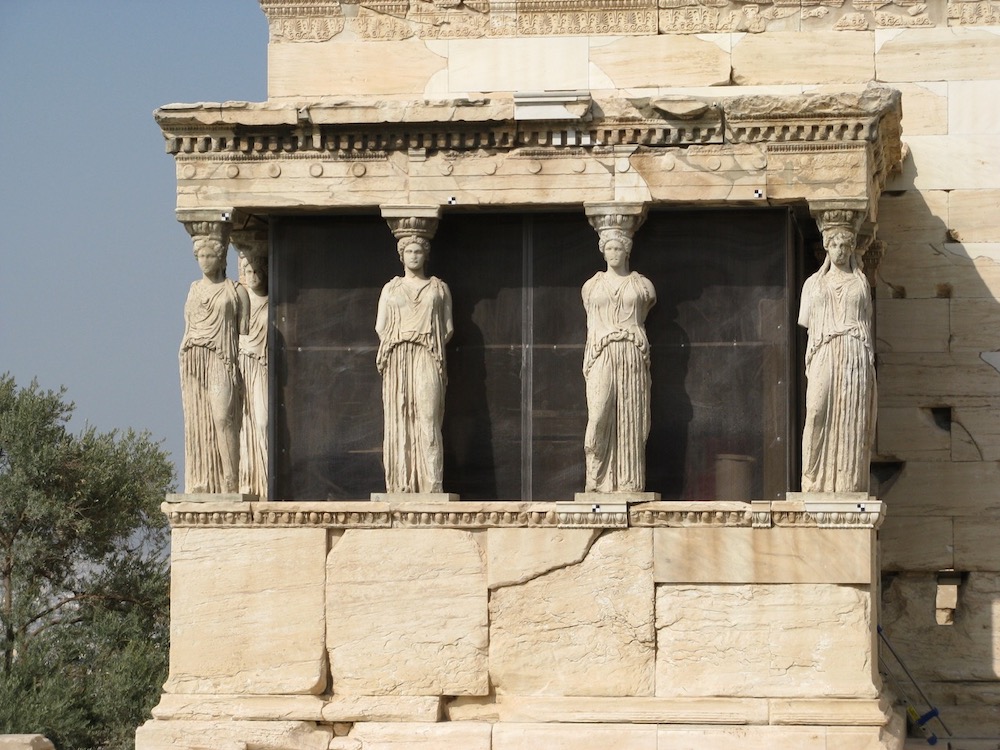Was the Acropolis a Harem? A Myth of Orientalism

This article was originally published at The Conversation and has been republished under Creative Commons.
The Acropolis of Athens counts among the world’s greatest architectural and artistic monuments. Visitors come to admire the marble buildings that testify to the glory of ancient Greece more than 2,000 years ago. Typically, only little attention is paid to the site’s rich medieval and Ottoman history. But one of the few stories commonly told about this period concerns the temple with six iconic sculptures of maidens, the so-called Caryatids.
Ancient Athenians built the temple with the Caryatids as the holiest shrine for Athena, the goddess of wisdom. In the medieval period, it was used as a church. But its fate supposedly changed dramatically following the Ottoman Turkish conquest of Athens in the 15th century. The story goes that the Muslim Turks had no interest in preserving the temple’s sacrality and instead converted it into something radically different: a harem. This was said to be the residence of the Turkish castle warden’s wives and sometimes thought of as a place of seduction.
But my new research shows this information might need to be revised. As part of this study, I analyzed all relevant historical sources about the Acropolis from the Ottoman period. It turns out the idea of a Turkish harem here originated in the 17th century with two visitors from France and England. They published popular books in which they asserted that the building was a harem. These visitors, however, did not even enter the building and gave contradictory, possibly speculative information about it.
Fantasy or not, the notion of the harem has long fascinated Western audiences, who’ve enjoyed these exotic tales of the Orient. Later authors simply repeated the information. This was even the case after the building had fallen to ruin in the Venetian bombardment of 1687.
My research also included several understudied Turkish sources. None of these mentions anything like a harem in the temple of the Caryatids either. But they do seem to say that it was in use as some kind of palace. All in all, there is little to suggest that the temple was ever converted into a place of erotic encounters.
HAREMS AND TEMPLES
Stories about harems in the temple of the Caryatids already existed in the time of the ancient Greeks—many centuries before the Turks arrived. The striking Caryatids themselves appear like petrified women in front of the building. They likely played a role in the creation of such tales. Time and again, visitors to the Acropolis have given meaning to the mysterious building based on these sculptures.
Anthropological research shows that impressive statues like the Caryatids can stir the imagination, prompting wild stories that are sometimes mistaken for “factual” history. To the casual onlooker, the Caryatids could serve as evidence for the harem.
But the idea of the harem is also deeply problematic as it continues a long-lived Western stereotype of the Turks as violent, sacrilegious barbarians. This stereotype originates in the many centuries of warfare between Christian European countries and the Muslim Ottoman Empire. Then, too, developed the popular fantasy that Turkish harems were mysterious, erotic places of seclusion.
The idea that the temple of the Caryatids became a decadent harem fit right into this negative Western sentiment about the Turks. That sentiment had dire consequences: Shortly after the young Greek state’s conquest of Athens in the 19th century, it led to the complete annihilation of the Turkish town that stood on the Acropolis. The same attitude led Lord Thomas Elgin, a British nobleman, to remove many Acropolis sculptures in the early 19th century—including one of the Caryatids.
IMPRISONED SISTER
Still today, these sculptures reside in the British Museum in London, to the dismay of many (in Greece and elsewhere) who wish to see them returned to Athens. Though the Caryatids still continue to fire the imagination: Local legend claims the marble girls who remain in Athens can be heard crying out at night in lament for their imprisoned sister in London.
The notion of a Turkish harem ties in with the current meaning of the Acropolis as an important archaeological site and a symbol of Greece and Western civilization. But this symbolism has a dark side: Anti-Eastern stories continue to be told at the expense of the Turks.
The Turks are typically portrayed as the villains of the Acropolis, but my research shows this is a crude interpretation of more than three centuries of Turkish presence. And it doesn’t do justice to their actual attitudes: Historical sources show that the Turks were not always the violent barbarians they are often made out to be. Rather, they were just as fascinated about the antiquities as modern tourists are today.


























